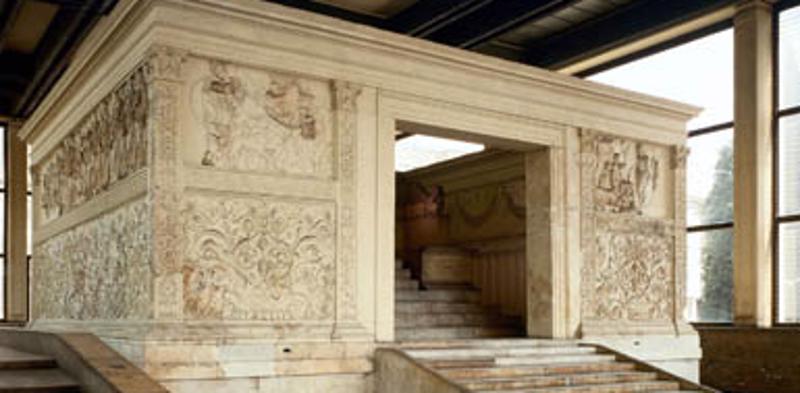My diary
https://www.britannica.com/topic/Ara-Pacis
Romans valued how they were perceived and craved a positive reputation, despite if their actions deserved such accolades. Many Romans memorialized themselves in a different way with the motive to create a façade against their natural intent. An example of this is the altar of peace created by Emperor Augustus. He was corrupt and known for his power that many considered as dictatorial. He was cruel and used violence to produce chaos. However, he did not want the Romans to perceive him in a negative light that is why he created a peace campaign in order to deflect his decisions to be viewed as positive. The cultural landscape reflected the ideology of the time of smoke in mirrors. If the leader was perceived to be a man of peace-
kmullen1
22 chapters
16 Apr 2020
Rome 2017: (3) The Alter of Peace (Ara Pacis)
https://www.britannica.com/topic/Ara-Pacis
Romans valued how they were perceived and craved a positive reputation, despite if their actions deserved such accolades. Many Romans memorialized themselves in a different way with the motive to create a façade against their natural intent. An example of this is the altar of peace created by Emperor Augustus. He was corrupt and known for his power that many considered as dictatorial. He was cruel and used violence to produce chaos. However, he did not want the Romans to perceive him in a negative light that is why he created a peace campaign in order to deflect his decisions to be viewed as positive. The cultural landscape reflected the ideology of the time of smoke in mirrors. If the leader was perceived to be a man of peace-

the people would not question him. This period in Rome could be classified as a period of façade and that is revealed in the way the altar of peace was created and preserved. The reflection of the oblique fell directly on the altar of peace once a year on Augustus’ birthday. It is fascinating that this cultural landscape tells a story through the friezes- it is a story, yet again of Roman conquest and triumph, with the motivation of peace.
1.
Rome 2017: Overview
2.
Rome 2017: (1) The Colomn of Trajan
3.
Rome 2017: (2) The Capitoline Wolf and The Twins
4.
Rome 2017: (3) The Alter of Peace (Ara Pacis)
5.
Rome 2017: (4) The House Of Vestal Virgins
6.
Rome 2017: (5) The Bust of Constantine
7.
Rome 2017: (6) The Equestrian Sculpture of Marcus Aurelius
8.
Rome 2017: (7) The Miliarium Aureum
9.
Rome 2017: (8) The Dying Gaul
10.
Rome 2017: (9) The Head of Lucius Junius Brutus
11.
Rome 2017: (10) The Boxer at Rest
12.
Rome 2017: (11) Augustus of Prima Porta
13.
Rome 2017: (12) Saint Paul's Statue
14.
Rome 2017: (13) Moses
15.
Rome 2017: (14) Santa Sabina
16.
Rome 2017: (15) The Holy Stairs
17.
Rome 2017: (16) The School of Athen's
18.
Rome 2017: (17) Disputation over the Holy Sacrament
19.
Rome 2017: (18) Saint John’s Lateran
20.
Rome 2017: (19) Danae
21.
Rome 2017: (20) Victor Emmanuel II
22.
Rome 2017: Conclusion
Share your travel adventures like this!
Create your own travel blog in one step
Share with friends and family to follow your journey
Easy set up, no technical knowledge needed and unlimited storage!
© 2025 Travel Diaries. All rights reserved.